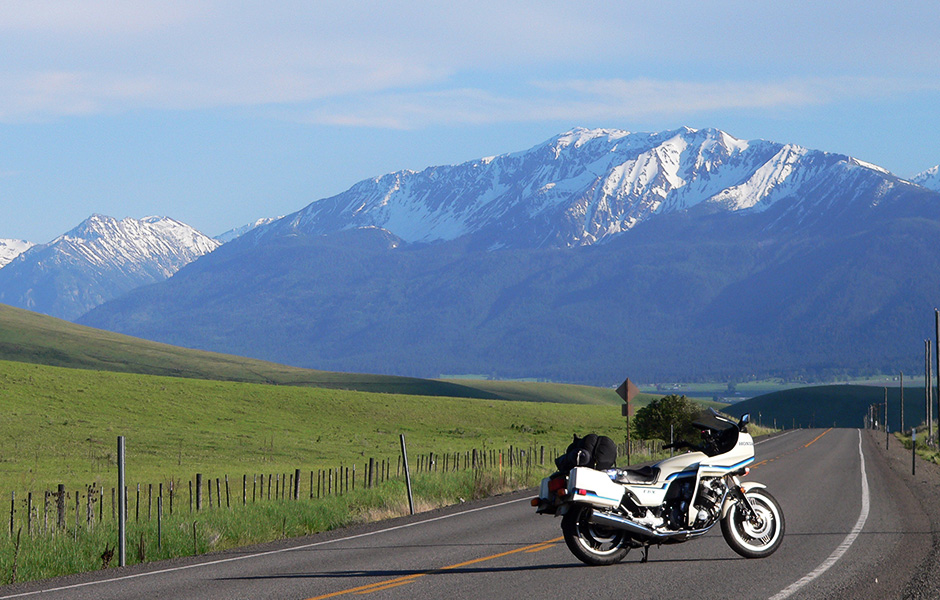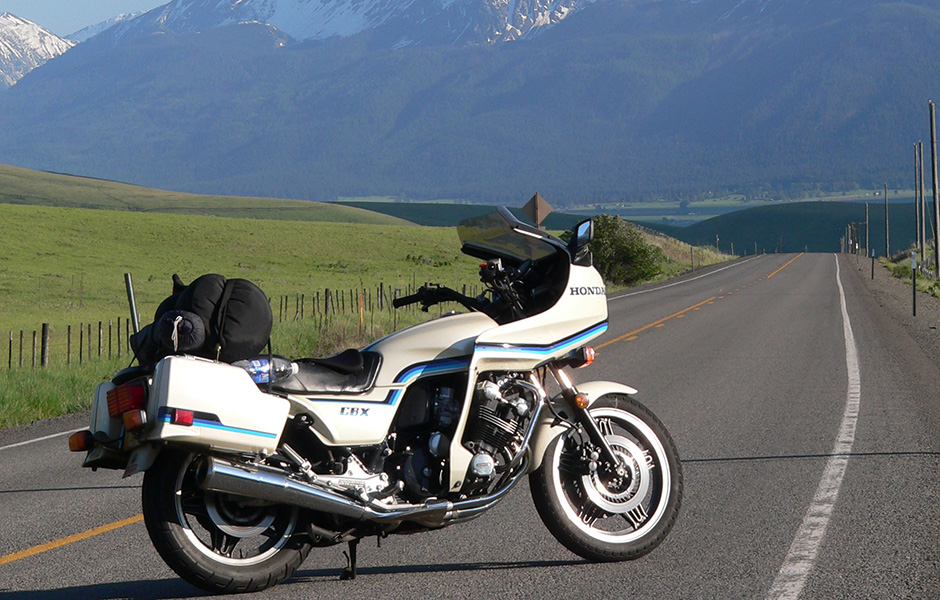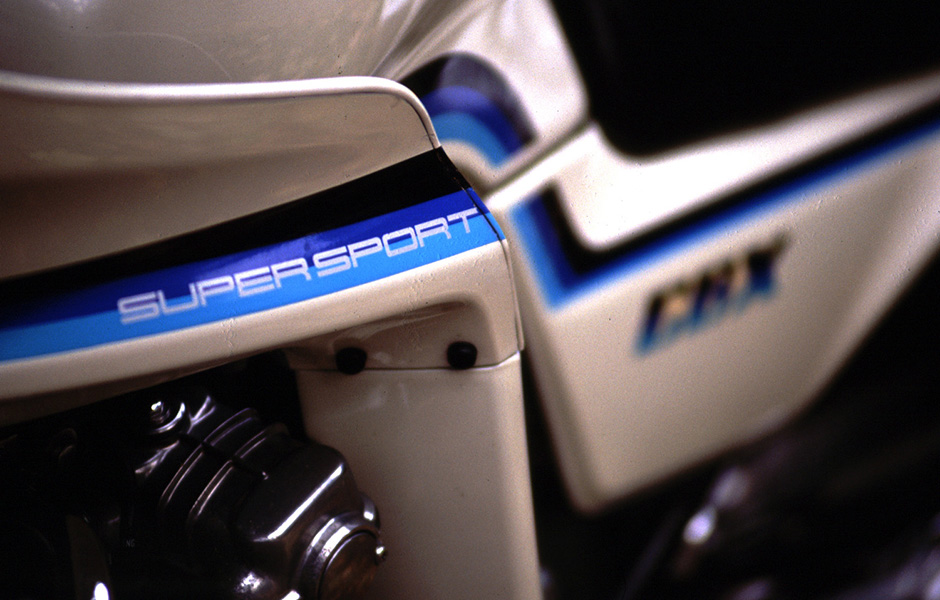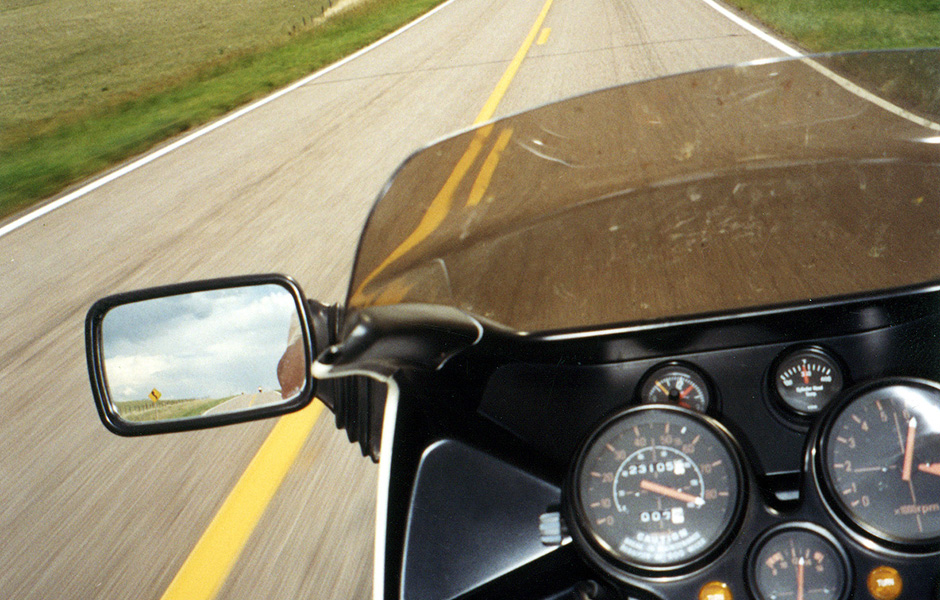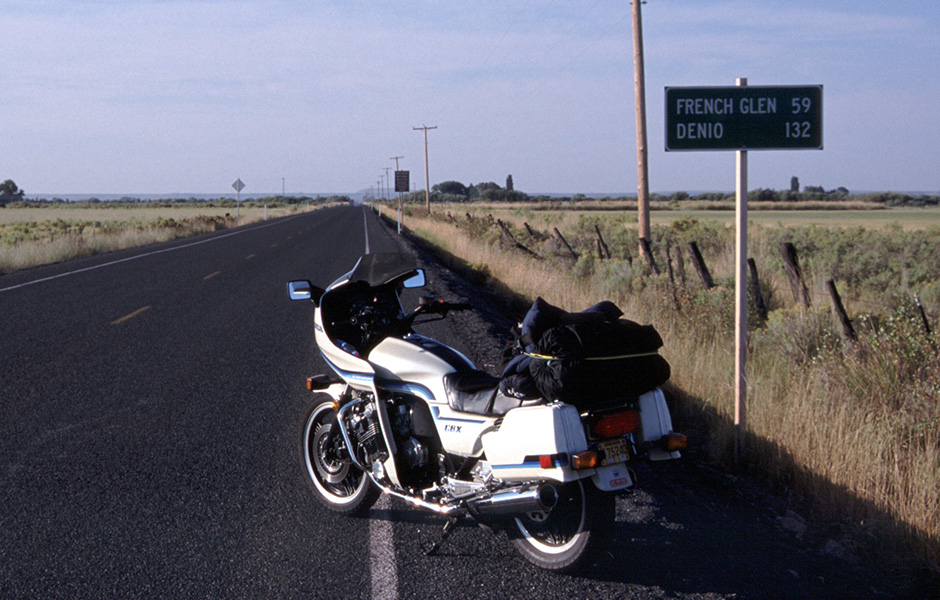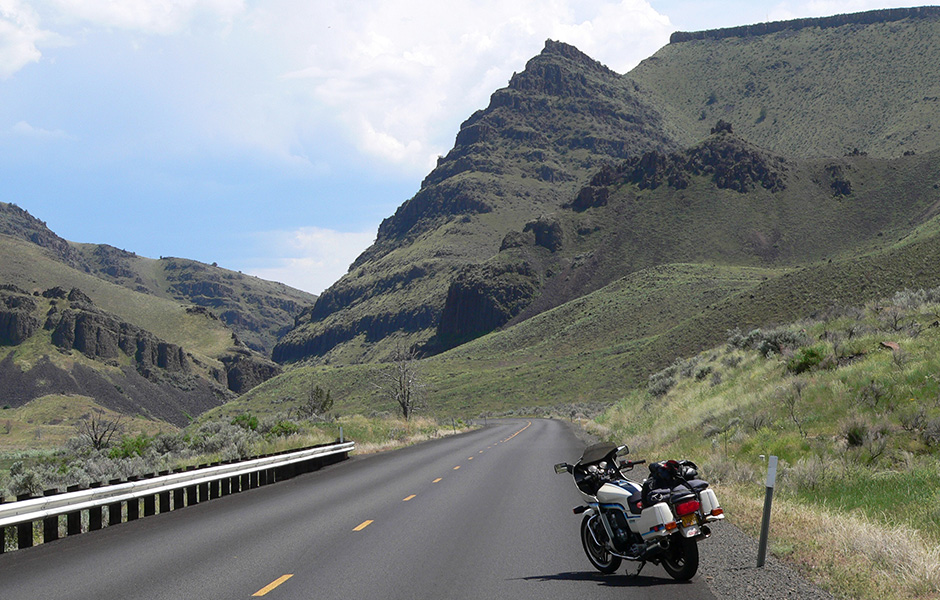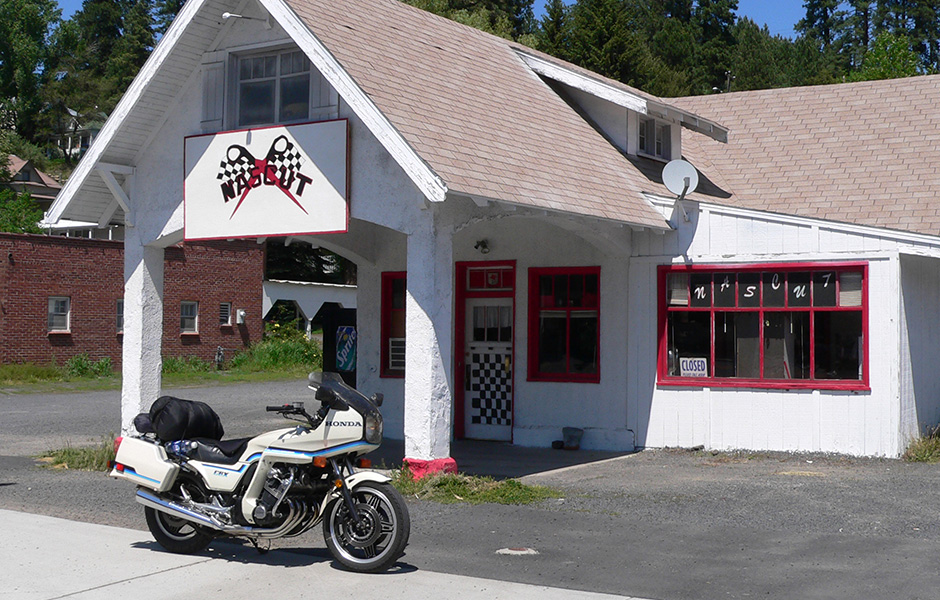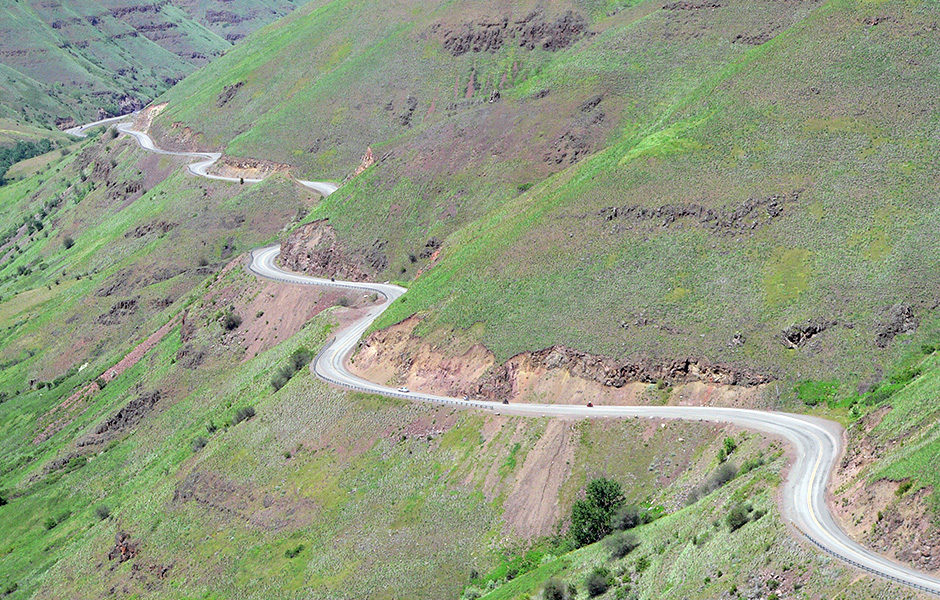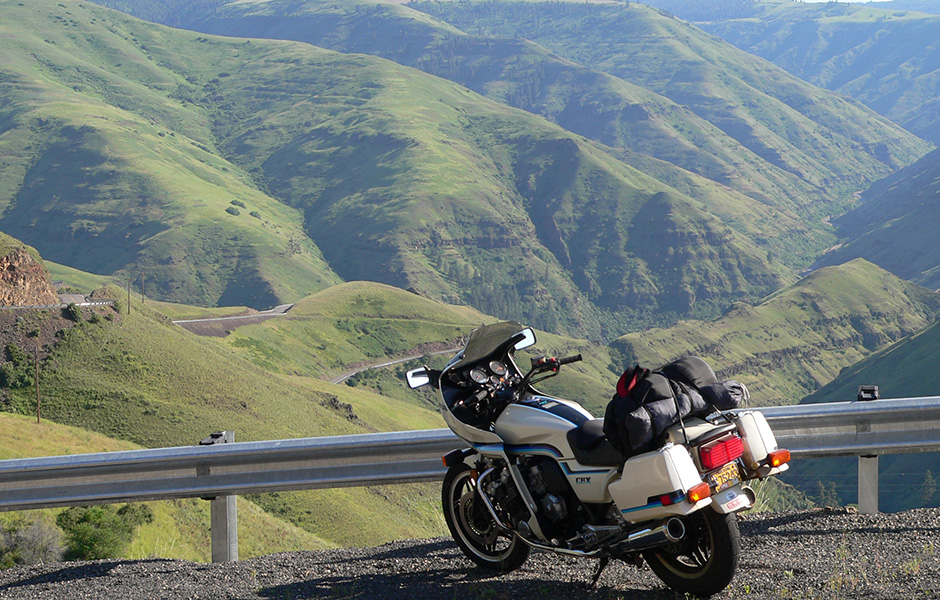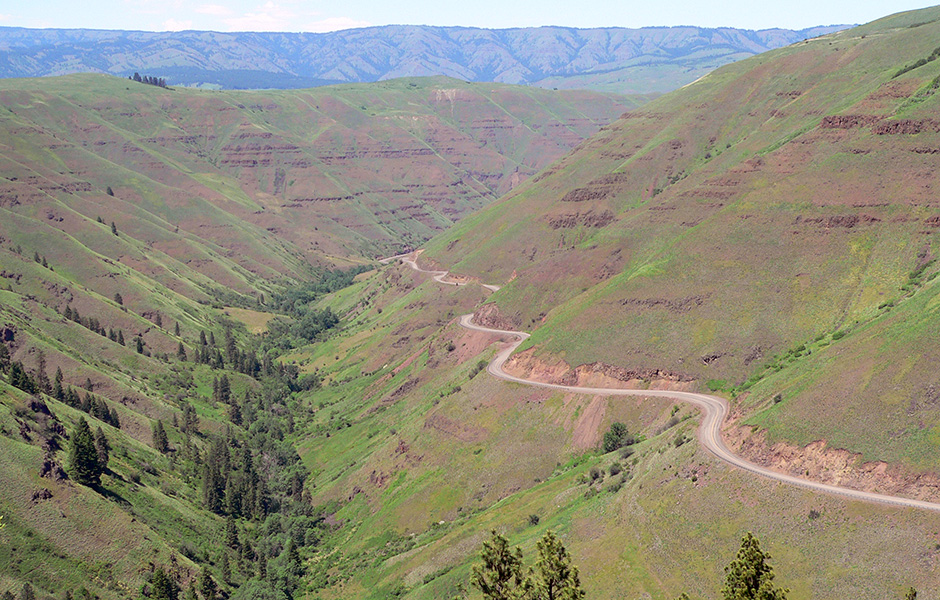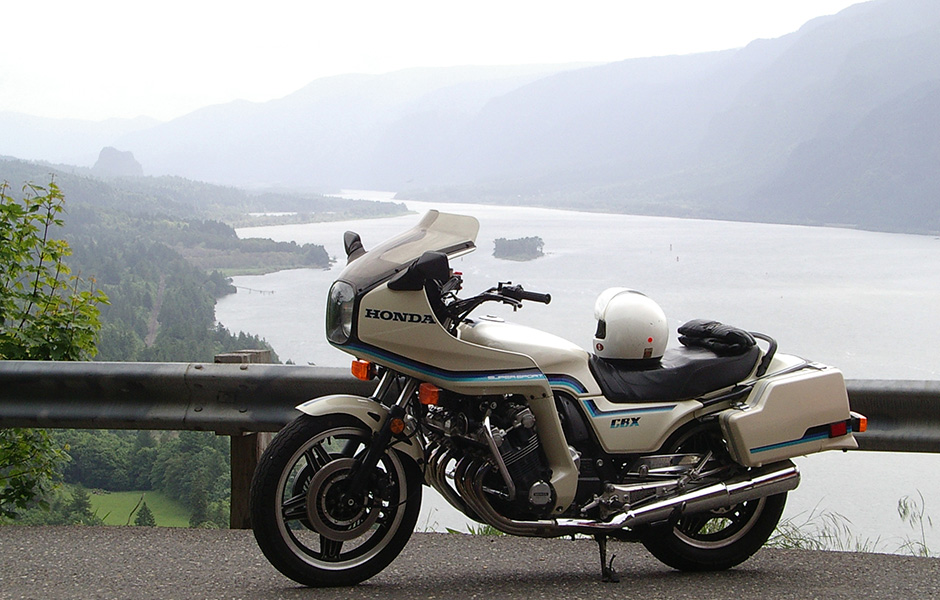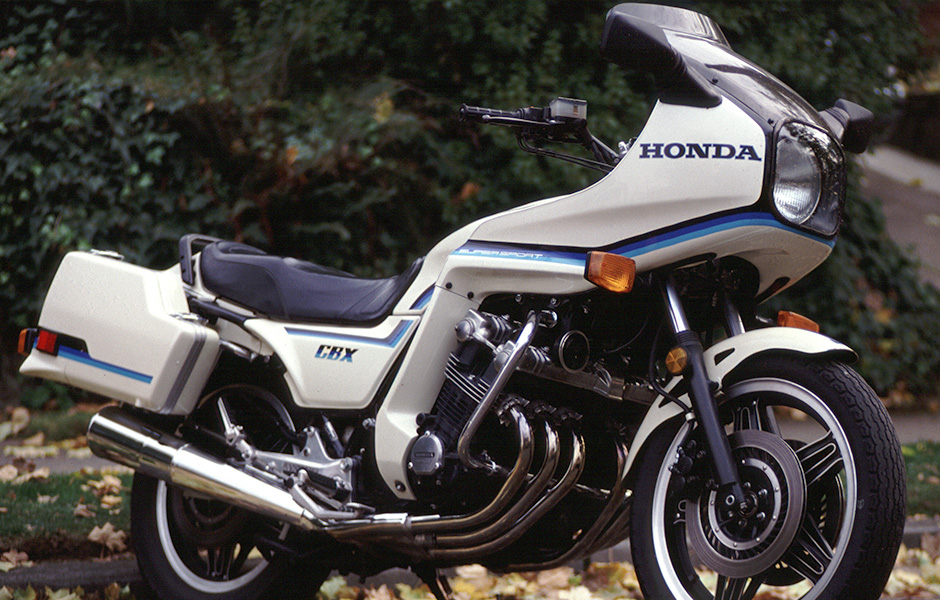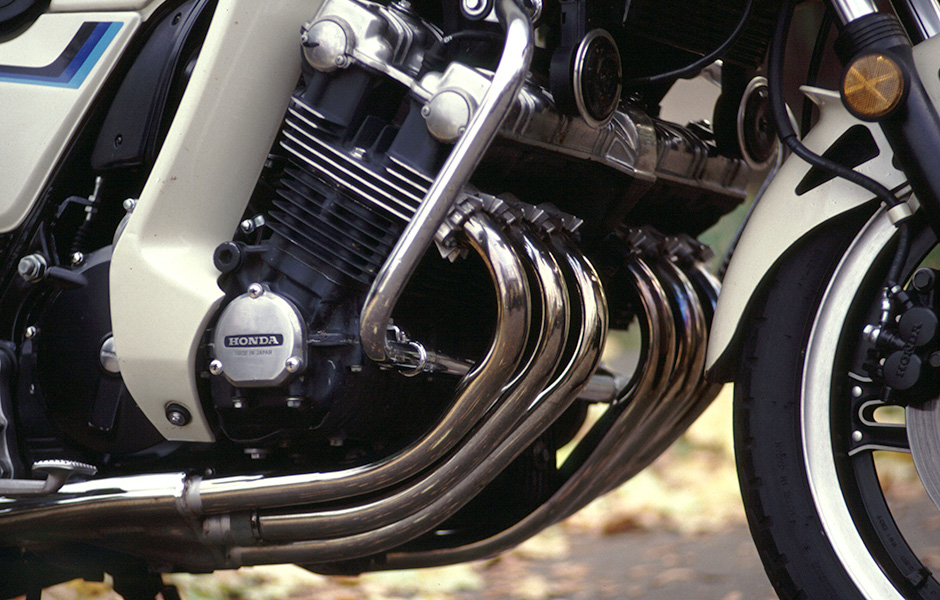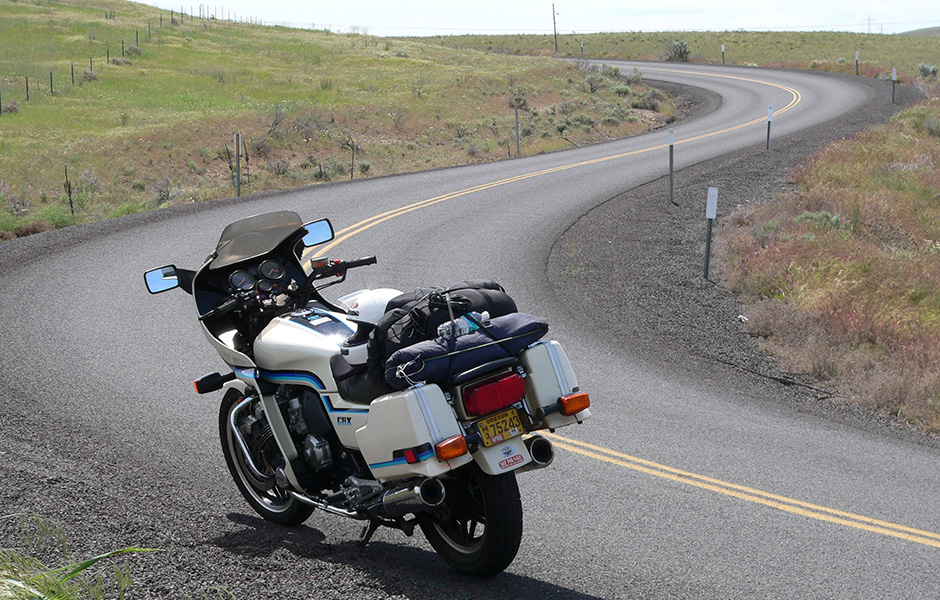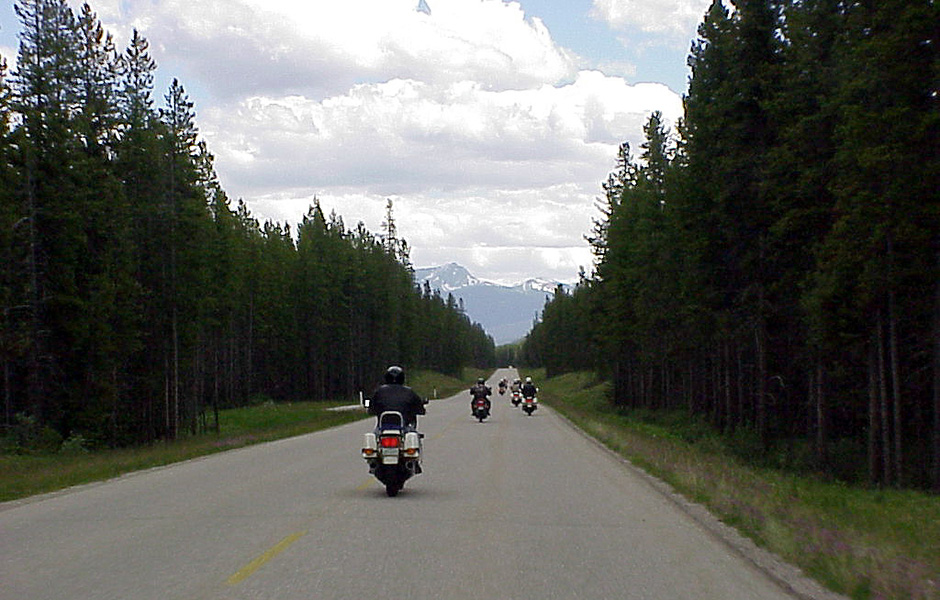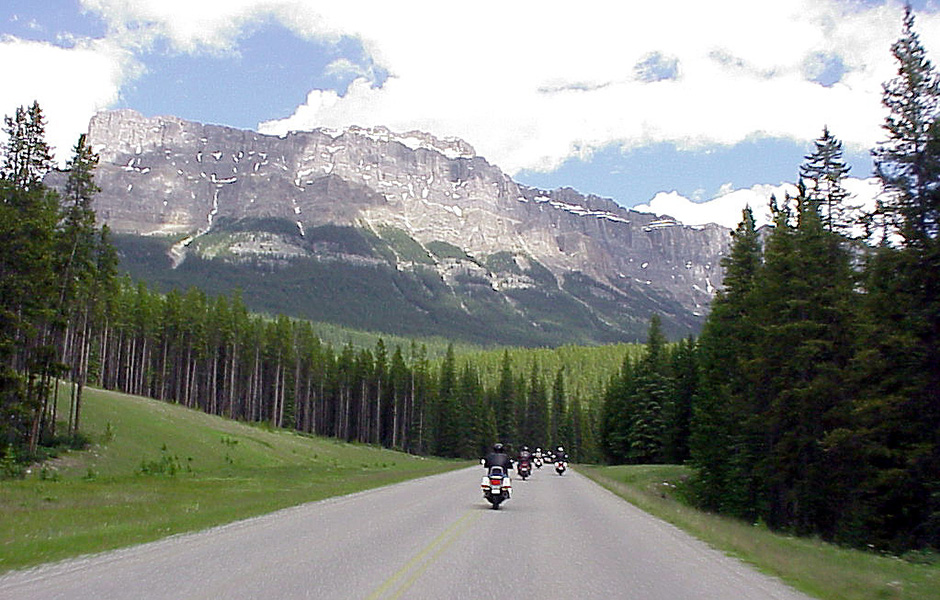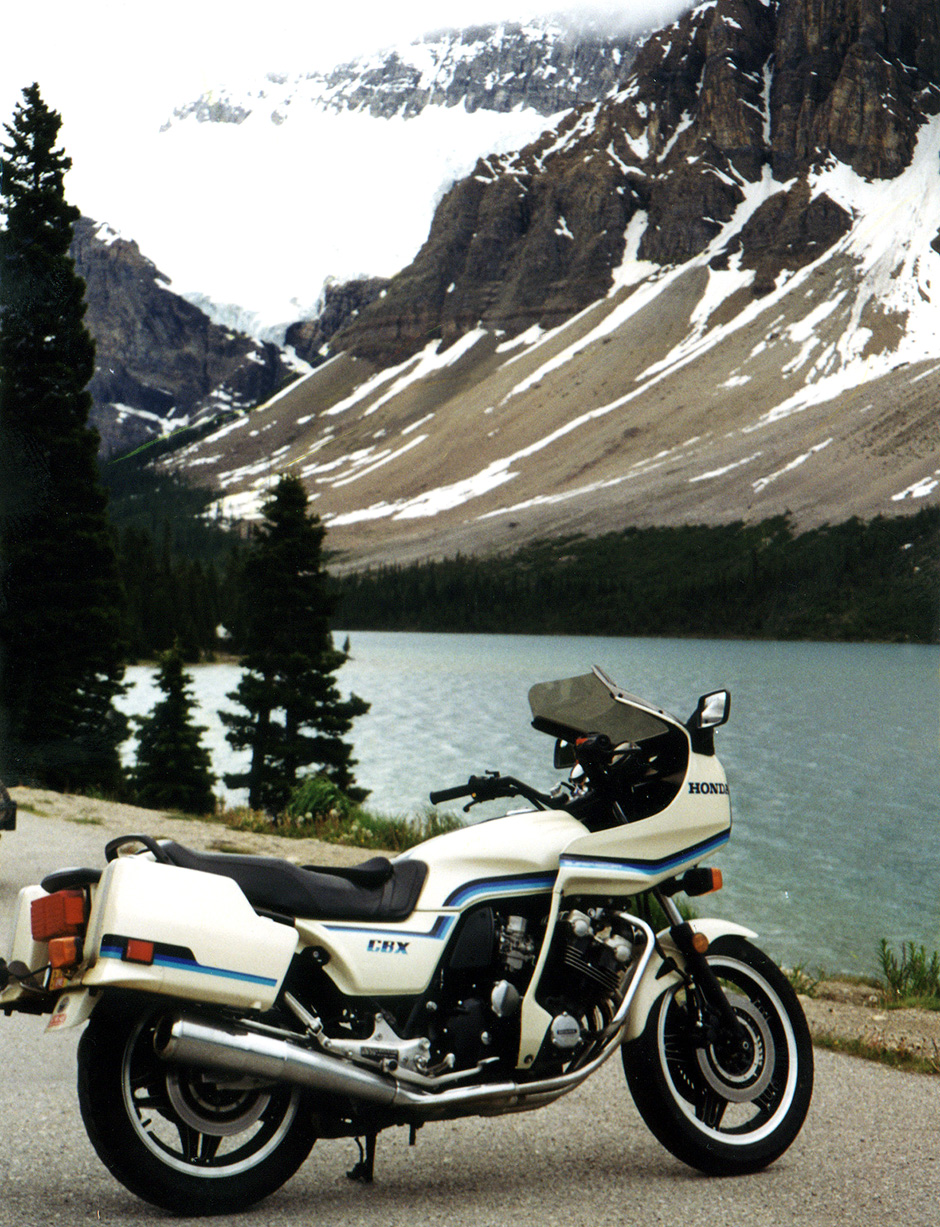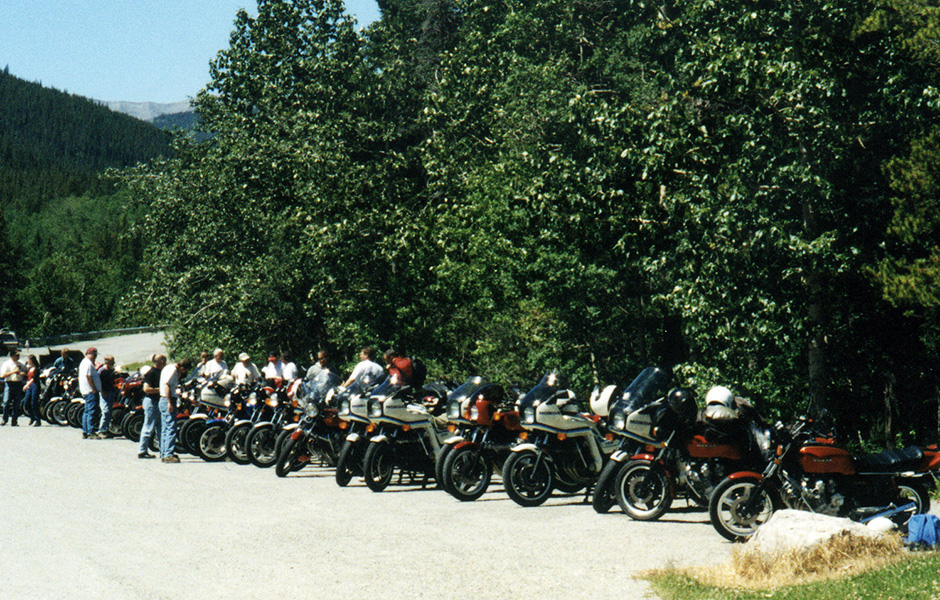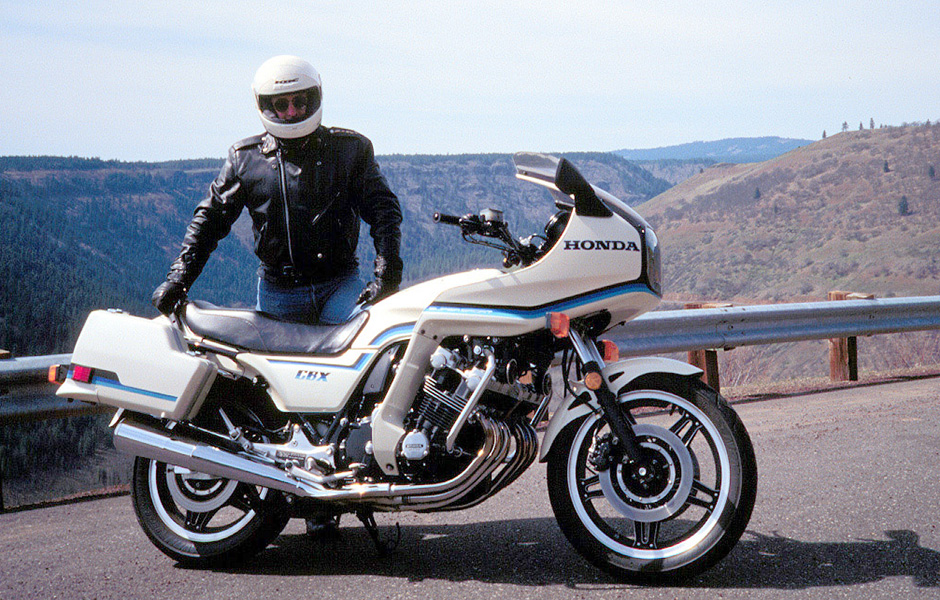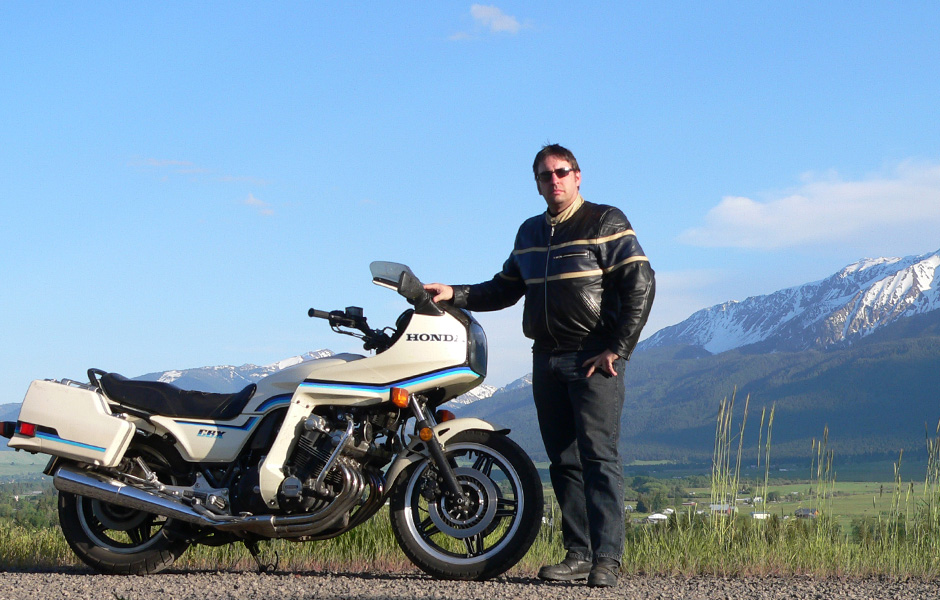Most motorcycle owners own more than one bike in their riding career, just like most people own different cars over time. And some bikes resonate more than others, leaving a lasting impression like a faithful pet while others make us scratch our heads and go “what was I thinking when I bought THAT thing?”
For over 20 glorious years, I owned a Honda CBX. For those unfamiliar, the CBX, initially introduced in 1979, was a “statement” bike by Honda, a gleaming 6-cylinder reminder of Big Red’s engineering prowess. Kawasaki and Benelli also made six-pot bikes, but neither were anywhere near the calibre of the CBX. In rawk speak, the CBX totally ruled.
But unlike the revolutionary CB750 that Honda had shaken the motorcycling world with 10 years earlier, the evolutionary 1050cc CBX, despite being a mechanical marvel, sold poorly. It was intimidating, complex (six carburetors!) and expensive. At first.
In 1981, Honda refashioned the CBX into a “Super Sport” version with a slick bubble fairing (as was the fashion of the day), and some too-small saddlebags out back. Today we call that kind of bike a “sport tourer.” Back then it was a sales disaster. It was about 15 years ahead of its time.
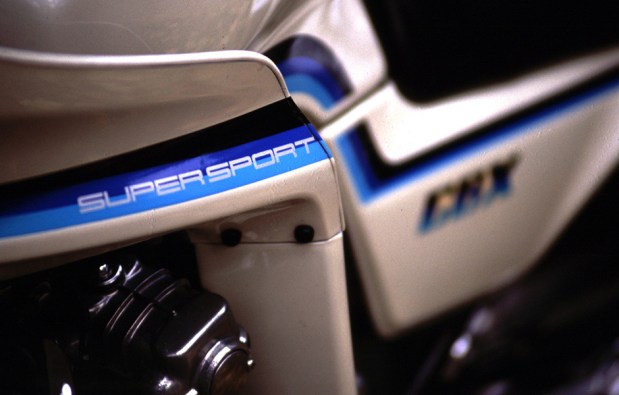
The CBX was discontinued a year later in 1982, and you could pick up a leftover new one for about $2,500. I know this because in 1984 I was riding a Honda scooter around town and often made excuses to visit the distant Honda dealership so I could, you know, get a quart of oil I didn’t need (they were about a dollar back then). The real reason, of course, was to eyeball the latest Honda hardware, especially the Interceptor sport bikes that had just come out and were the hottest thing on two wheels at the time.
But back in the corner of the dealership sat a forlorn, pearly white and heavily discounted CBX in all its glory. I was smitten. The bike just screamed out for long-distance, high-speed travel, but for a kid riding a wheezy scooter to a $3 an hour job and trying to save for college, it may as well have been $25 million for the CBX. There was just no way.
Ten years later, as a single guy with college in the rearview mirror and a solid job affording some discretionary income, a fortuitous friendship resulted in the sourcing of a mint-condition white 1982 CBX with a scant 6,000 miles on the clock. The owner was meticulous. The price was reasonable. The cash was on hand. Suddenly, I had a CBX in the garage. I could almost hear the angels singing.
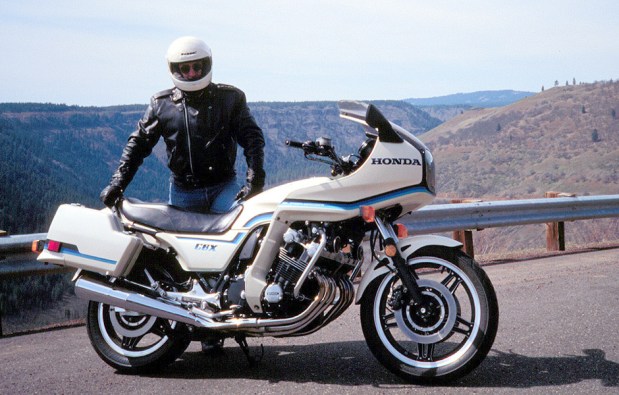
The big CBX was everything I had hoped for – and more. By this time, sport touring bikes were becoming a thing and the CBX had passed from sales disaster into cult status. They were in demand, and I had landed an especially sweet one.
Out on the road, the insanely smooth inline-six engine made a tick over 100 horsepower and even with stock pipes on it, it sounded like a Ferrari as it revved to its 9500rpm redline. I revved it a lot. It was not the best handling bike on the road, but after tinkering with tires, fork settings and replacing the rear shock, things firmed up nicely. I could make that big girl dance.
The big CBX imparted a certain King Of The World feeling while riding. That’s really the best way I can describe it. You sat up straight on the bike, which was tall already. You could see over traffic. Plus, it was white with blue stripes, so it bore a strong resemblance to the Kawasaki police bikes still in wide use. Riding down the freeway, drivers who checked their mirrors thought “police bike,” hit the blinkers and moved carefully to the right. Freeways became the Red Sea, biblically parting to allow my high-speed forward progress. Even the motor cops loved it.
In 2000, I and three other CBX riders rode our bikes across scenic western Canada from various West Coast locales to Calgary, Alberta, for the World CBX Rally. Less than 50 bikes showed up, some from overseas, which for a “CBX rally” is actually a massive turnout. That’s how rare they are.

Coming back from Calgary, my group crossed back into the U.S. across the Montana border to take advantage of their non-existent relaxed daytime speed limits. The four of us howled across Big Sky country in fifth gear at 9,000rpm for mile after mile, bounding over rises at ludicrous speed, strafing corners with pegs scraping. I thought the bike was going to blow up from the stress, but at each gas stop, the sturdy six smoothly ticked over in perfect mechanical pitch at idle, ready for more. It was pure, unadulterated mechanical harmony that I’ll never forget.
As the sun set on that day, we pulled into tiny Lincoln, Montana, and checked into a tiny motel nestled among towering fir trees. A large herd of deer calmly filtered through the grounds as we sat smoking stogies in a large outdoor hot tub with a supply of suds nearby. Close by, the four CBXs glowed in the hues of the evening sun. I couldn’t believe my good fortune.
I went on many more long rides on the CBX during the next decade, but nothing as epic as that 10-day sojourn. During those years, my extended adolescence finally played out. I married and welcomed a son to the world, along with dogs, cats, a career and all the associated responsibilities. A Suzuki dualsport joined the CBX in the garage, along with a BSA project and a starter dirtbike for my growing boy. The CBX sat in stasis for longer and longer intervals.
The few rides I could fit in were usually day trips or a weekender out to Oregon’s outback area. The odometer closed in on 50K and the typically trustworthy CBX, despite religious upkeep, began to show signs of needing work I could neither perform nor wanted to pay for. It was time to say goodbye.
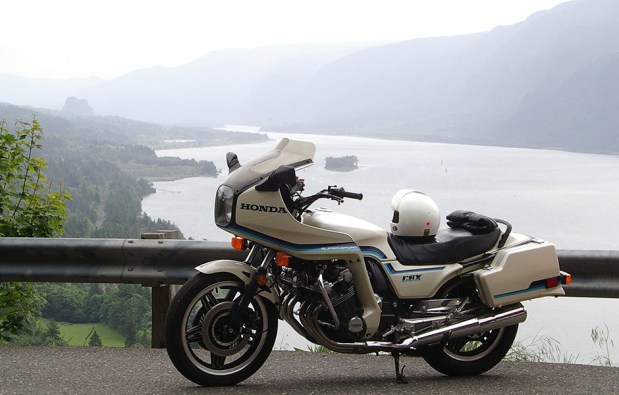
I ended up selling the CBX for a full $1,000 more than I paid for it, a small reward for my somewhat obsessive maintenance of the bike over two decades. The new owner was pleased and pledged the still-beautiful CBX would get the best of care, which helped take the sting out of seeing it loaded gently into a truck and then disappear down the street.
I salved my sorrow not by investing the cash like a responsible person would, but by, of course, buying another motorcycle, a 1999 Honda CBR1100XX Blackbird (below), a bike that was in some ways a spiritual successor to the CBX and had been on my very long wish list for many years.
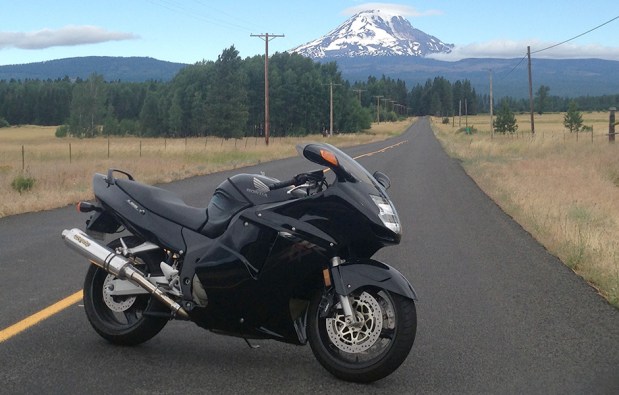
The sleek , glossy Blackbird with the raptor-esqe silhouette doesn’t stand out quite like the high-profile CBX, but it’s also a rare bird in its own right. It’s also fuel injected (bye bye six carbs!), has boffo brakes, sounds the business and handles in ways the CBX could only dream of. It’s also comfortable and with about 170 horsepower on tap, monstrously fast. But, since it’s a Honda, it’s easy to ride, docile around town as needed and pretty much reliable as a hammer. Did I mention it’s really, really fast?
Admittedly, the Blackbird, while extremely competent in every way (and an overachiever in some), doesn’t light my fire quite like the CBX did, but when I roll on the throttle in second (or third or fourth) gear and the bike fairly launches into hyperspace, I am reminded of the still respectable power of my old friend, a reliable road trip companion for two decades, and I’m thankful for all those hours riding along to that incredible mechanical symphony.
Especially while in Montana.
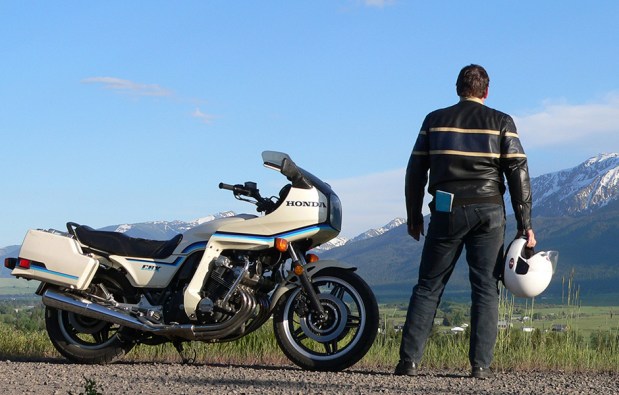
All photos by Bill Roberson
